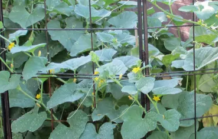Story source:University of Missouri
Hank Stelzer, 573-882-4444
ST. LOUIS, Mo.– The emerald ash borer has officially arrived in the city of St. Louis.
Officials with the USDA’s Animal and Plant Health Inspection Service (APHIS) recently confirmed the identification of an emerald ash borer (EAB) found in northern St. Louis, said Hank Stelzer, state forester for University of Missouri Extension.
Early this month, a crew pruning trees along power lines on Emerson Avenue in the Walnut Park East neighborhood noticed a number of sickly ash trees, including at least one with D-shaped holes in the bark characteristic of EAB infestation. The crew alerted foresters for the utility company Ameren, who in turn contacted the Missouri Department of Conservation (MDC). As they removed the suspect tree, Ameren and MDC foresters found an adult borer, which they sent to APHIS for identification.
“It was a great example of people who work with trees having been trained about invasive pests and knowing what to look for and who to contact,” said Rob Lawrence, forest entomologist for MDC.
“With last year’s find in west St. Charles County and now this detection within the city limits, homeowners need to seriously consider their options,” said Stelzer.
The emerald ash borer is a highly destructive insect pest whose larvae burrow into ash trees, eventually killing them. The small, metallic-green beetle has destroyed tens of millions of ash trees in 25 states, with the most serious devastation concentrated in Michigan and surrounding states. EAB’s first known infestation of the St. Louis area was discovered last year in trees at an industrial park in St. Charles County.
The first thing homeowners should do is accurately identify trees on their property. “EAB only attacks ash trees, not other species like oaks and hickories,” Stelzer says.
It’s possible to protect healthy ash trees with ongoing pesticide treatments, he says, but this is a costly and time-consuming commitment that should be limited to what homeowners consider “high-value” trees.
Only begin pesticide treatment if there is an infestation within 15 miles of your property, he adds.
In the meantime, homeowners can decide which trees are worth the investment.
“Trees that are important to the landscape, such as those providing shade on the west side of a home, or perhaps a tree planted in someone’s honor, are good candidates for treatment,” he says.
Trees need to be in good condition to benefit from treatment. Ash trees in poor condition for any reason or that aren’t integral to the landscape aren’t good candidates, Stelzer says. He recommends interspersing replacement trees among these ash trees before they die.
Ironically, ash trees were a species of choice to replace American elms lost to Dutch elm disease. There’s a lesson in that, Stelzer says.
“If you are planting several replacement trees, take a tip from investment brokers and diversify your landscape portfolio.”
MU Extension, in partnership with MDC, the Missouri Department of Agriculture and APHIS, hosts the Tree Pests website at treepests.missouri.edu. Here homeowners can learn to identify ash trees, track the latest EAB developments and learn about treatment options.
Also available on the site is a downloadable four-page guide from MDC, “Emerald Ash Borer Management Guide for Missouri Homeowners.”
“We celebrated Arbor Day last month and this week is EAB Awareness Week,” Stelzer says. “So this latest EAB find is a timely reminder that trees play an integral part in our yards and communities.”




